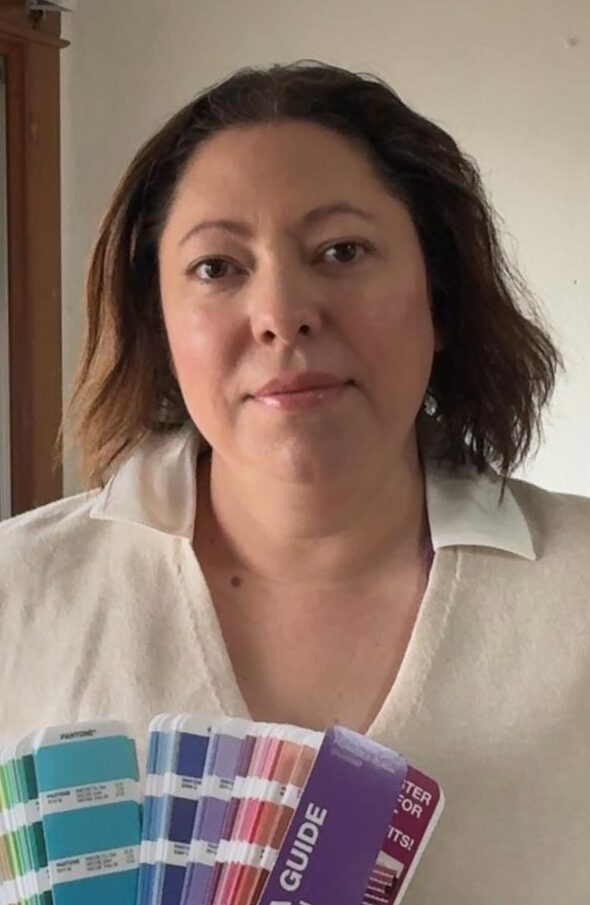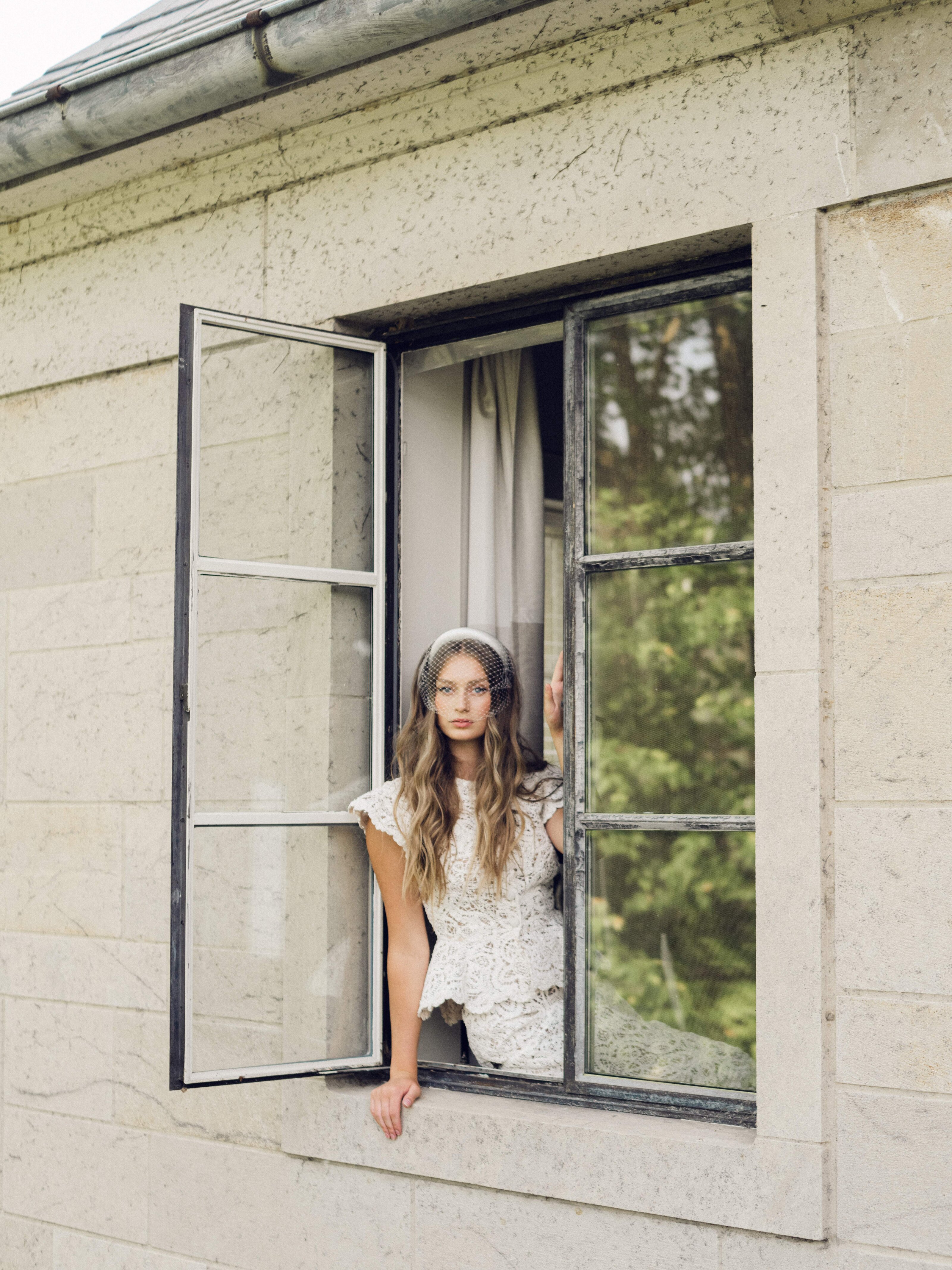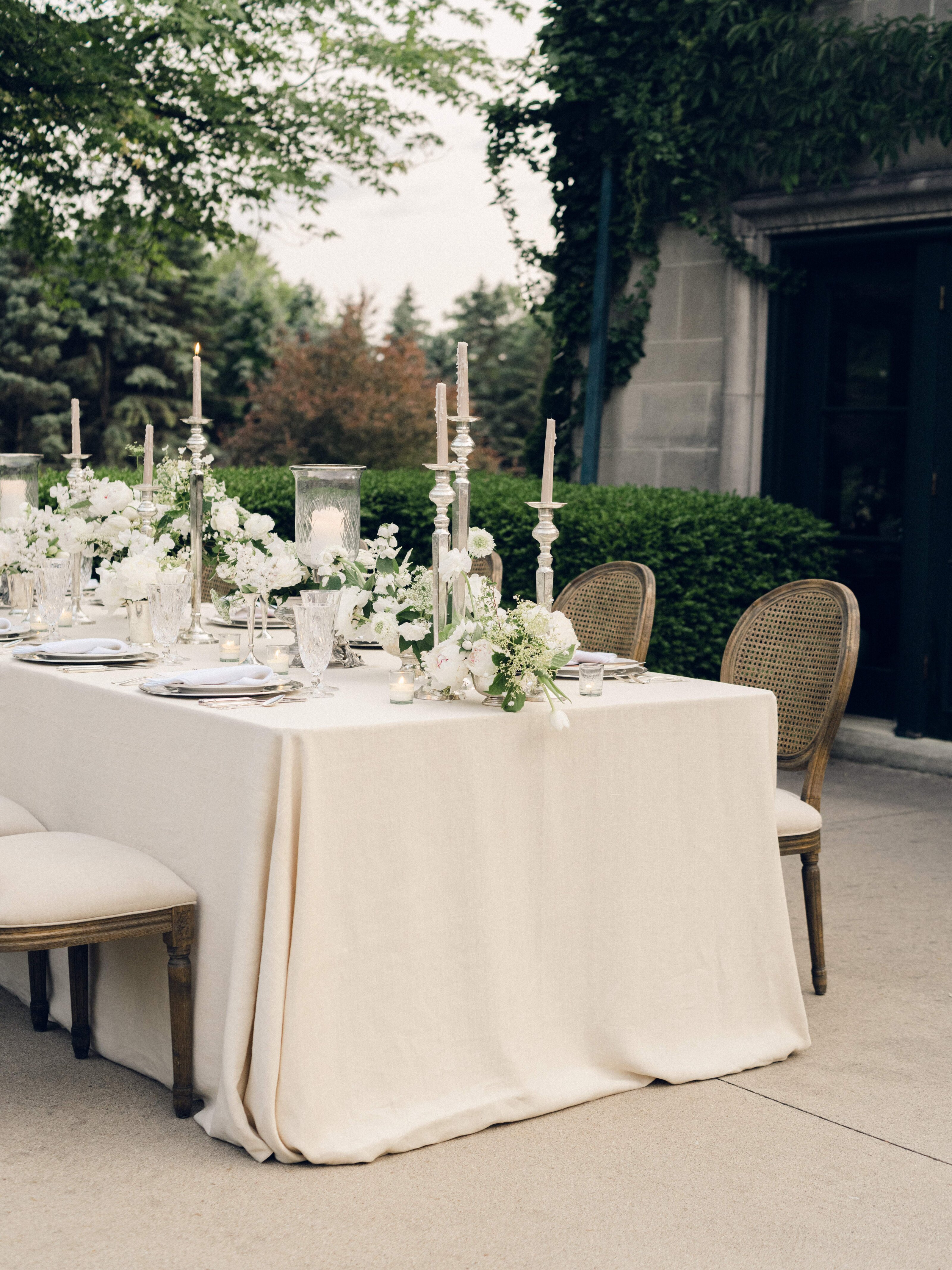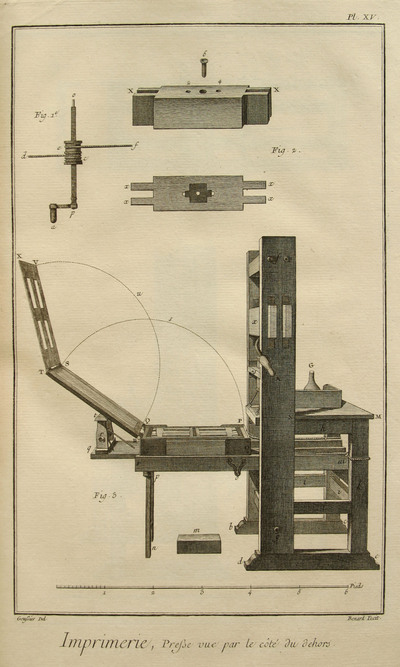
If you have been following the wedding industry at all for the last several years, you will have seen the resurgence of the art of letterpress, most notably in luxury wedding invitations. Thick, cotton paper with pillow-y impressions, along with a huge variety of fonts, shapes, and colors are a fairly common sight these days.
Do a little scrolling & searching on the history of the printing press however, and you see just how modern-day letterpress differs from its origins, while retaining the essence of a lost art.

Beginnings of Printing
Johannes Gutenberg invented the printing press and movable type around 1440 CE. The first uses during that time period were religious texts like the Bible and Martin Luther’s 95 Theses.
Gutenberg’s invention allowed for the spread of ideas and information like never before, not to mention increasing literacy rates. We can go on all day about the beginnings of modern printing. If you have a curious mind, you can find out more at sites like Oregon State University’s McDonald Collection
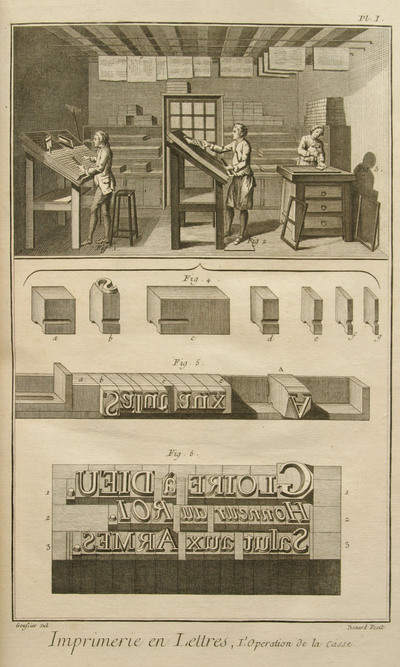
In today’s world, movable type is still used by letterpress printers who are dedicated to keeping that skill alive. It really is somewhat of a lost art. Most designers and printers are using newer technology such as photopolymer plates. This creates a hard plastic negative of a design, which when mounted on a particular kind of metal base, creates a stamp which is then used in a printing press to apply the design and ink to the paper.
Photopolymer allows for a much broader range of fonts you can use. Script and calligraphic style fonts are popular. You also find more variety in illustrations for designing.
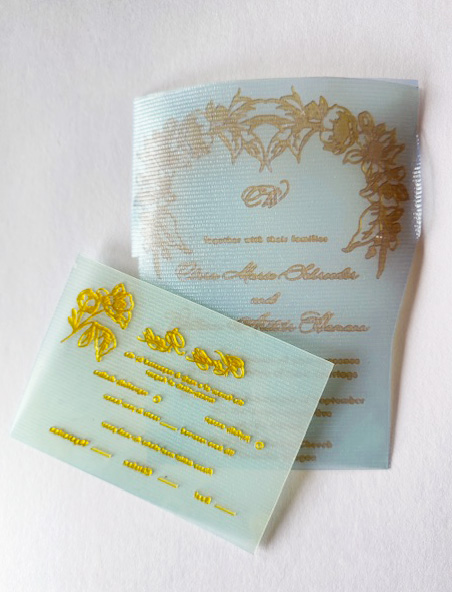
All About the Impression
While this use of modern techniques has created a bit of a rift between traditionalists and newer printers, you can’t deny it has helped to keep this art alive, in a very digital age. One of the main sticking points between the old and new guard is impression. Traditionally, you were never supposed to see an impression in the paper from the letters. This was the biggest taboo! Most of the reason was the paper used for printing was not as thick as we use for modern invitations. You wanted a ‘kiss’ impression; just enough pressure to leave a crisp inking of the letters (think newspapers. You didn’t want pressure that would tear the paper, or make the reverse side of the paper illegible).
However, today’s aesthetic demands a ‘bite’ impression; that deep pillow-y impression that creates a very tactile feature. It can even be desirable to have sow-through, or bruising, on the back of the paper. Most invitations and stationery are not printed double-sided, and if they are, they are usually duplexed (gluing two pieces together to form a thicker piece) so show-through doesn’t matter.
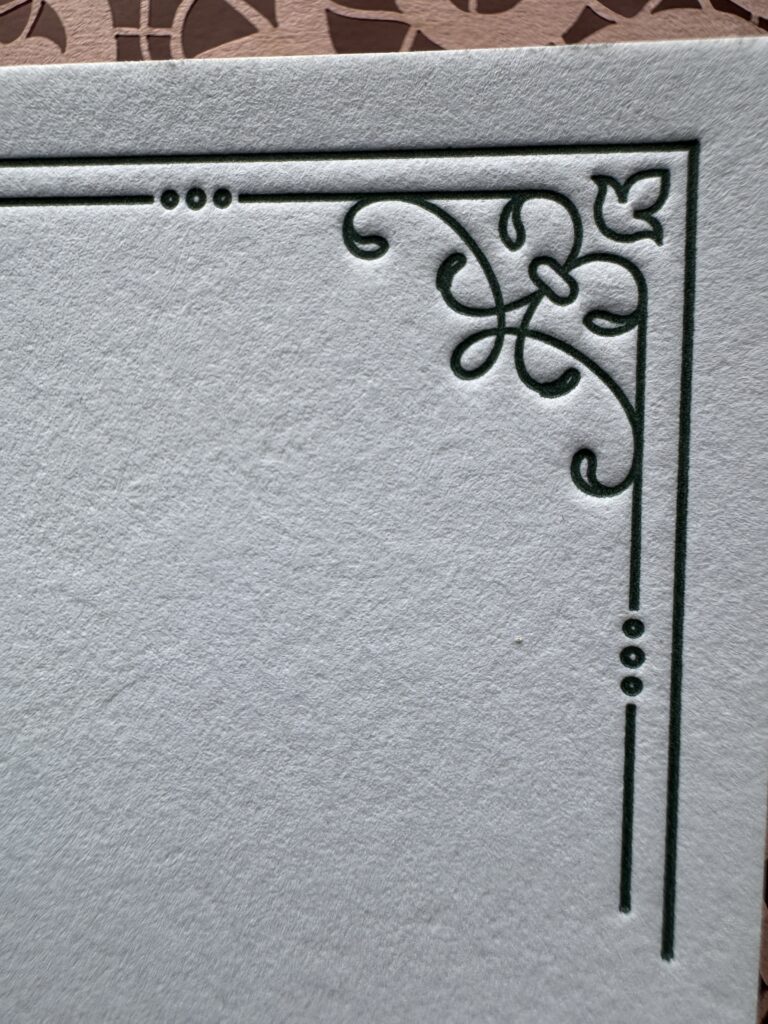
Paper Makes the Print
The paper used by today’s printers can also vary from tradition. Invitation designers (like here at Winged Seed Paperie) use mostly cotton paper of various colors and thicknesses. Cotton paper is most often made using recycled cotton linters from the garment industry. The excess trimmings and cast-offs that are bundled and shipped to papermakers (I could write a whole other blog on papermaking, but I will leave that to the experts in that field).
Cotton paper is a soft paper, which is what allows for a deep impression. It also gives that luxury element to wedding invitations. There are numerous other types of paper suitable for letterpress, made partly from things like hemp fibers, sawdust, wheat, grasses and more. You can find a ridiculous array of colors and finishes such as linen, felt, wood-like and even leather. There doesn’t seem to be as many limitations as you might expect. The adage of, “If you can dream it, you can do it”, applies well to letterpress.
You aren’t just limited to rectangular paper shapes either. Die-cutting allows for almost any shape you can design to be created. Most letterpress printers design a vector shape in Adobe software and then send that to a manufacturer to have a steel-rule die made. You place this die into the press instead of a photopolymer plate and when pressed into the paper, cuts the shape as designed. Circles, ovals, wavy edge, scalloped edge, brackets, tickets, frames and custom enclosures are all achieved with die-cutting.
Letterpress means Luxury Wedding Invitations
Letterpress isn’t perfect, and its quality relies heavily on skill and time. There are limitations to ink colors and types of illustrations used. But in my opinion (obviously biased), that makes it unique. Anyone can hit ‘PRINT’ on a colorful, digital design, but it takes much more time (so much time) to design, prep, register and print a 3-color letterpress print. Each color requires a separate photopolymer plate for those design elements. You print one color, then you have to clean the press, which is a not-small undertaking. Then you have to line up your second color, ink up the press again, and test. It’s a pretty lucky process if you get perfect registration the first time around. If you have a third color, rinse and repeat the process of cleaning, reinking, and registration.
And this is only for one card! The process repeats for your response card, details card or other custom cards. Getting through 150, three-card enclosure wedding invitations can be a multi-hour, or sometimes multi-day process, depending on the scope and design.
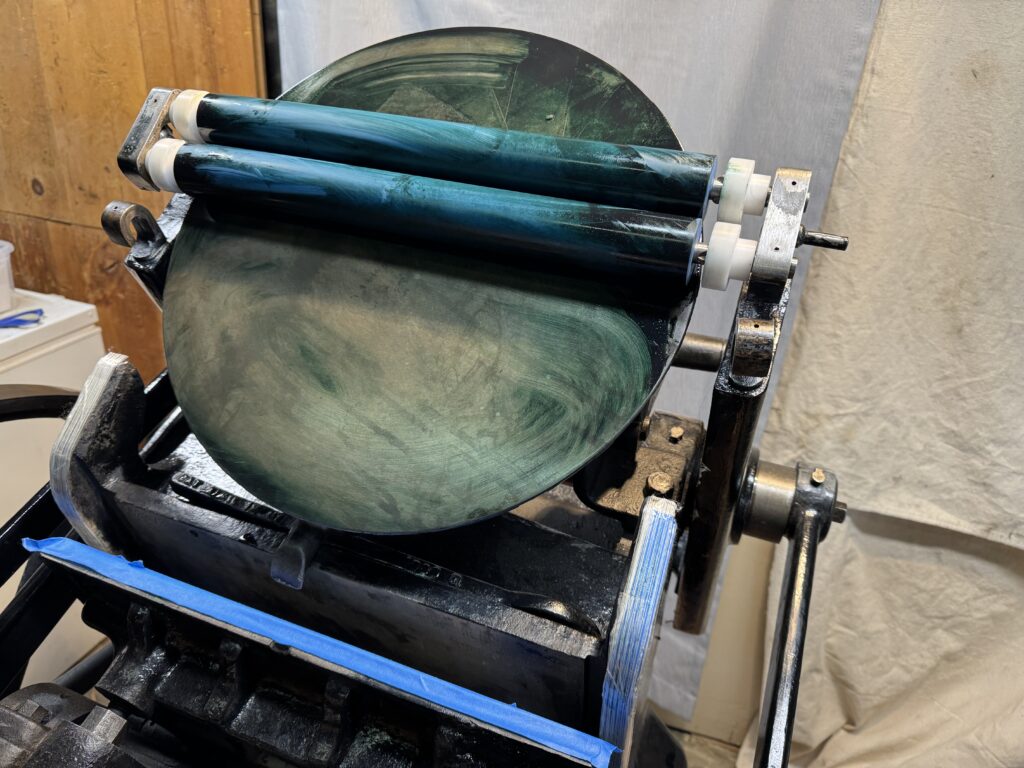
Luxury Takes More
And that process in a nutshell is why letterpress is so much more expensive than digital designs. It also harkens back to the bygone days like the Victorian, gilded-age, Edwardian, Art Nouveau and Art Deco eras. Think mansions and manor houses (Downton Abbey, anyone?) Vanderbilts, Rockefellers and Asters. If anyone was going to have luxury, letterpress wedding invitations, it was these types of families.
The act of receiving a thick envelope, maybe with calligraphy addressing. Open it up to a beautifully assembled, perhaps ribbon-wrapped luxury letterpress invitation suite. Wedding invitations and letterpress are also responsible for the resurgence of the wax seal. What was once a medieval security device and way to authenticate a letter, has become a popular embellishment. You can design a custom wax seal, and give an additional touch of luxury to your stationery.
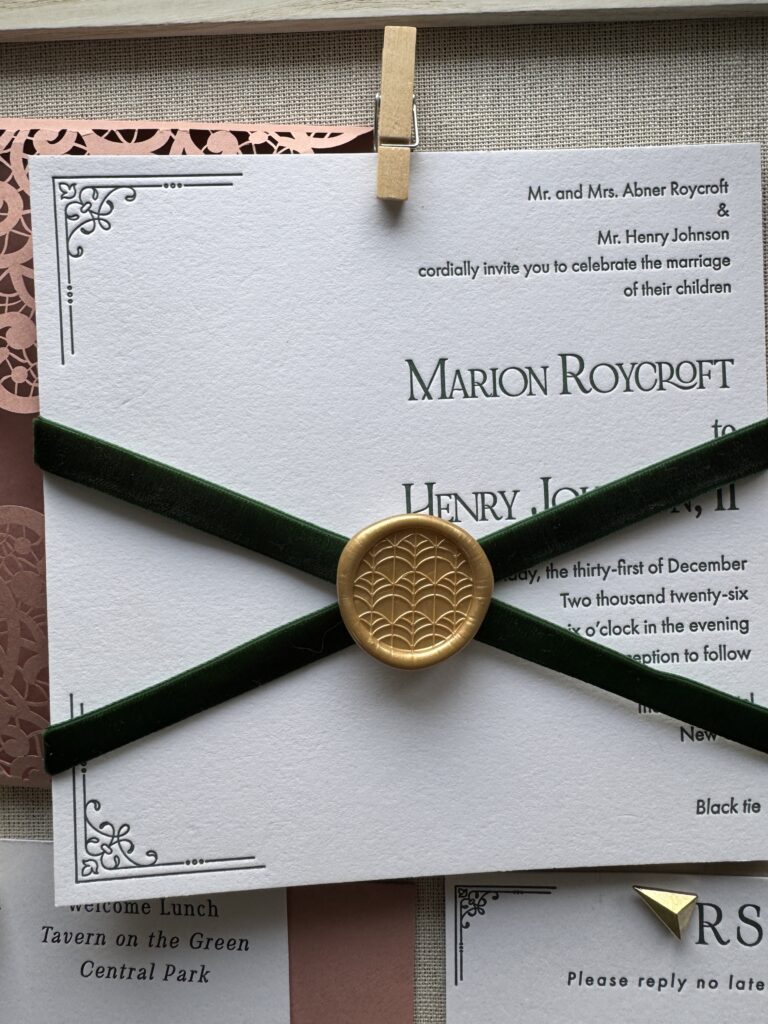
It is as much about this literal hands-on tactility as it is about the sending of information. Letterpress elevates most anything from basic to heirloom-quality art.
More to Learn
If you find yourself intrigued by letterpress, and want to learn more, there are various websites where you can learn more, including Briar Press and Boxcar Press.
If audio is more to your liking than visual, have a listen to Hot Off the Press Podcast, one of my absolute faves.
To view our current selection of semi-custom invitation suites, visit our Collections page
Keep the paper love alive, friends.
Marissa
+ view the comments
